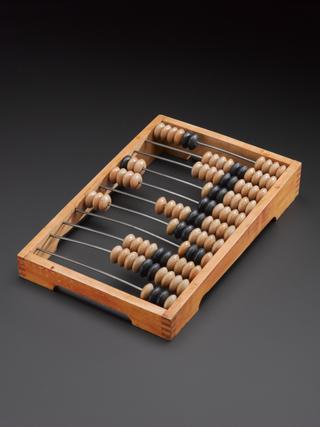










Burroughs hand operated adding and listing machine, serial no. 5029, by Burroughs Adding Machine Company, Detroit, dated 1913.
Before the computer era, mechanical calculators were indispensable office equipment especially for professionals whose jobs depended on adding numbers. The American William Burroughs (1857-1898) invented what would become the first commercially successful adding-listing machine (with printed output) out of his frustration as a bank clerk having to deal with the drudgery of endless arithmetic work. This machine was used at the head office of Barclays Bank from 1897 to 1913, increasing the speed and accuracy of clerical work.
An article at Banker’s magazine in February 1899 was claiming that "great assistance has been derived from certain mechanical labor-saving contrivances, among which I will mention the typewriter, the registering accountant or adding machine, and the telephone. The registering accountant is of comparatively more recent introduction, but I think I can safely say it has proved itself one of the most useful instruments even introduced to the banks.’’
Burroughs founded the American Arithmometer Company in St Louis, USA, in 1888 which grew to become the largest manufacturer of adding listing machines in the world eventually taking over the entire market. After Burrough’s death in 1898 the product range was expanded by the acquisition of potential competitors and the company was relocated to Detroit in 1904, and was renamed The Burroughs Adding Machine Company in 1905 in honour of its founder.
The printing calculators grew into bookkeeping machines in the 1920s and 30s, automatic accounting machines during the 1940s and 50s, and then into electronics, computers, and aerospace systems through the 1960s and 70s. The company became the Burroughs Corporation in 1953, and after a merger formed IT brand Unisys in 1986. Burroughs had extensive overseas operations and was exporting to 60 countries by the mid-1920. In the UK, the Burroughs Adding Machine Company had manufacturing plants in Nottingham and Strathleven in Scotland.
Details
- Category:
- Mathematics
- Object Number:
- 1913-534
- Materials:
- brass (copper, zinc alloy), wood (unidentified), glass, paint, textile and steel (metal)
- Measurements:
-
Overall: 320 mm x 335 mm x 510 mm, 25.5 kg
- credit:
- Unisys Ltd.



